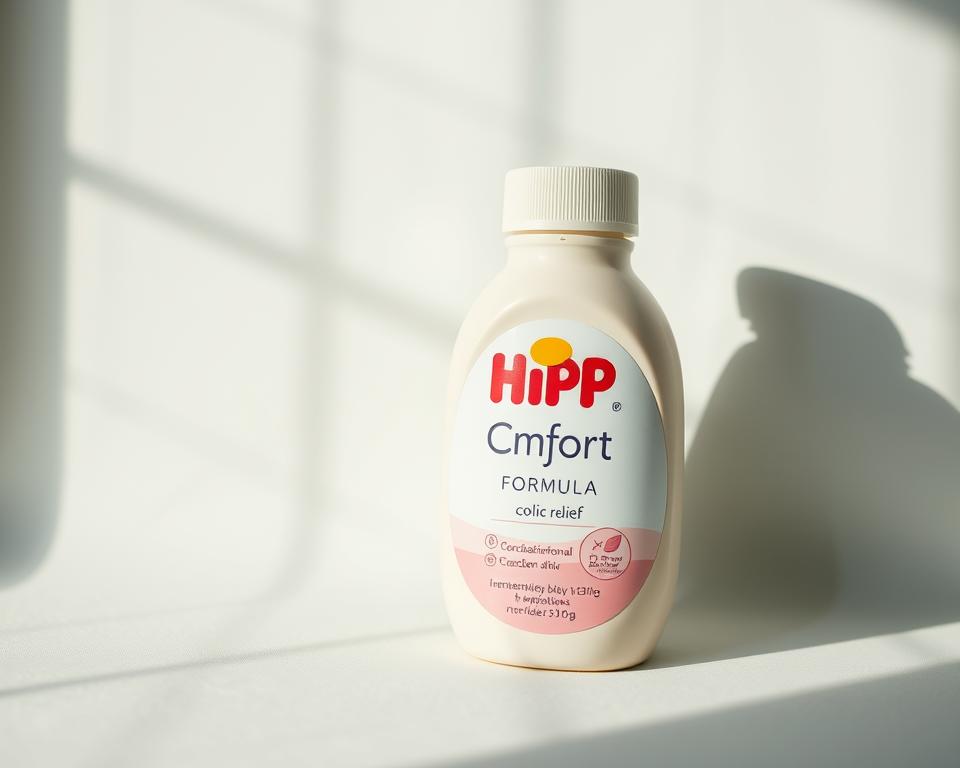Excel at SEO for WordPress: Lightning-Fast Roadmap
Interestingly, 78% of firms built on WordPress experience better search-engine positions after deploying targeted SEO initiatives. WordPress SEO optimization has grown into a critical pillar for digital success. It converts pages from invisible to magnetic for search engines.
WordPress delivers a robust foundation for website owners striving to increase their search presence. With built-in functions and adaptable optimization tools, WordPress SEO solutions can help businesses ascend search engine result pages efficiently. SEO Marketing Nerds advise harnessing these native functions to establish a robust digital footprint.
This guide will take you through the most effective SEO for WordPress, exposing pro tactics that turn your website into a traffic magnet. Be you a professional SEO consultant or a site owner, these methods will enable you unlock your website’s full potential using boost SEO WordPress.
From grasping fundamental optimization techniques to executing sophisticated tactics, this guide provides hands-on guidance to improve your WordPress website’s search outcomes. Prepare to plunge into the realm of WordPress SEO and watch your web exposure climb.
Grasping WordPress SEO Foundations
WordPress and SEO are in ideal sync, boosting your site’s presence in search results. As a versatile content management system, WordPress creates a solid foundation for SEO initiatives.
Grasping WordPress SEO essentials can radically change your site’s digital footprint. It delivers distinct perks for SEO specialists and site owners alike:
- Clean HTML markup
- Mobile-responsive design capabilities
- User-friendly content handling
- Extensive plugin ecosystem for SEO enhancements
Choosing WordPress.org instead of WordPress.com offers you total control for SEO optimization. The self-hosted version lets for greater customization, vital for high-level SEO techniques.
WordPress’s SEO benefits are many:
- Customizable permalink structures
- Rapid content posting
- Simple metadata management
- Built-in features for search-engine visibility
To enhance SEO on a WordPress site, it’s imperative to understand these core components. Powerful WordPress SEO needs a deliberate blend of technical optimization and valuable content.
Insider tip: A WordPress SEO pro always prioritizes user experience in addition to search-engine criteria.
Must-Have WordPress SEO Settings
Configuring the proper SEO settings is essential for any WordPress site. A well-configured WordPress SEO setup can significantly boost your site’s search-engine performance and exposure. Professional WordPress SEO agencies stress a methodical approach to these essential settings.

Here are the main settings that turn your WordPress site search-friendly:
- Configure Permalink Structure
- Use clean, meaningful URL formats
- Include targeted keywords in permalinks
- Avoid lengthy, convoluted URL strings
- Build XML Site Map
- Provide a complete sitemap
- Send to Google Search Console
- Verify all critical pages are discovered
- Implement SSL Cert
- Switch to HTTPS for stronger security
- Improve WordPress Google SEO ranking signals
- Secure user data
A WordPress SEO premium plugin can streamline these settings. During your WordPress SEO review, prioritize maintaining a solid foundation that search engines will appreciate. Emphasize clean site architecture, quick loading speeds, and logical content hierarchies.
Expert Hint: Ongoing optimization is critical to sustaining strong search-engine results.
Don’t forget, these WordPress SEO-friendly settings are your initial move toward improved digital exposure and SERP positions.
Adding SEO to WordPress
To boost your WordPress site’s exposure, a strategic approach is essential. Learning how to apply SEO to WordPress can significantly boost your online presence and pull in more targeted traffic.
Many tactics can improve your site’s search-engine standing. These include:
- Craft title tags and meta descriptions
- Publish high-quality content
- Implement WordPress local SEO techniques
- Establish robust internal linking structures
- Enhance image optimization
WordPress SEO best practices emphasize multiple critical aspects. Content quality continues to be the most important factor in search-engine results. Your website should provide valuable information that answers user queries.
For brick-and-mortar companies, focusing on geographic-specific keywords is vital. This involves embedding location-based phrases and creating content that connects with your local audience.
Powerful SEO is about crafting a seamless user experience while showing relevance to search engines.
Back-end optimization is a key component of your WordPress SEO plan. Ensure your website is fast, is mobile-optimized, and has a clean, logical structure. This makes it easier for search engines to index your site.
Finding the Perfect WordPress SEO Tool
Selecting the ideal SEO plugin can significantly boost your WordPress website’s search results. No matter if you’re a beginner or an seasoned SEO specialist, you require powerful tools to refine your site successfully.
When reviewing WordPress SEO plugins, look at these critical factors:
- Easy-to-use interface for on-page optimization
- All-in-one optimization features
- Real-time content analysis tools
- XML sitemap creation
- Schema markup integration
Leading WordPress SEO plugins to try include:
- Yoast SEO: Robust content optimization tool
- All in One SEO Pack: Extensive feature set
- Rank Math: Advanced configuration options
A WordPress SEO agency typically suggests plugins that ease technical optimization while delivering detailed site analysis. Key considerations include ease of use, performance impact, and alignment with your specific SEO site WordPress targets.
Expert insight: Always trial plugins in a development environment before full implementation.
Choose a plugin that matches your technical expertise and offers actionable guidance for enhancing your site’s search-engine rankings.
WordPress On-Page SEO Methods
Perfecting on-page SEO is essential for WordPress sites looking for higher search-engine results. Basic SEO WordPress strategies can dramatically increase your content’s performance. This, in turn, draws more organic traffic to your site.
Core optimization techniques include:
- Creating persuasive title tags with primary keywords
- Producing descriptive meta descriptions
- Structuring content with strategic header tags
- Using short URLs
When using WordPress SEO help, it’s essential to create descriptive title tags. Keep them between about 55 characters long. Put your primary keyword at the beginning and include your brand name at the conclusion. These tips help search engines grasp your content’s relevance.
For best results, work on fine-tuning your content layout. Use H1 tags for main titles, h2 for section headings, and h3 for subsections. This hierarchical approach improves both readability and SEO performance.
URL optimization is another critical aspect of SEO optimisation WordPress. Ensure your URLs are short, meaningful, and include targeted keywords. Skip complex structures that can confuse users and search engines alike.
Keep in mind: On-page SEO is about delivering high-value, clear content that serves both users and search algorithms.
Optimizing Content for SEO
Creating powerful content is the cornerstone of WordPress search optimization. An effective WordPress SEO optimization service needs a strategic content approach that attracts both search engines and visitors.
Implementing WordPress longtail keyword SEO involves several key steps:
- Conduct thorough keyword research to discover relevant search terms
- Create content that directly answers user questions
- Create unique, valuable insights not found elsewhere
- Structure content for clarity
When optimizing SEO on WordPress, prioritize crafting excellent content that delivers real value. Quality beats quantity always. Use long-tail keywords smoothly within your text, so they flow seamlessly with the content.
To improve SEO WordPress performance, consider these content approaches:
- Publish in-depth articles
- Regularly update current content
- Use internal linking to connect related posts
- Maintain a consistent publishing schedule
Great content is the bridge between your website and your readers’ needs.
By implementing these WordPress search optimization techniques, you’ll deliver engaging content that not only ranks well but also offers meaningful value to your readers.
Back-End SEO Strategies
Technical SEO is the core of a robust WordPress site optimization strategy. The right technical elements can significantly enhance your website’s search-engine results and user experience.
When configuring SEO for WordPress, multiple essential technical aspects need attention. Site speed is a fundamental ranking factor that directly affects search results. Google’s Core Web Vitals now evaluate websites based on load speed, interactivity, and visual stability.
- Improve site speed through caching mechanisms
- Cut down HTTP requests
- Compress and scale images
- Take advantage of browser caching
For WordPress site SEO optimization, consider adding structured data and schema markup. These technical elements enable search engines understand your content more precisely. This can possibly improve rich snippet displays in search results.
Mobile optimization is another vital technical SEO component. With mobile-first indexing, guaranteeing your WordPress website performs seamlessly across devices is essential. Responsive design and speedy mobile performance are no longer optional for high rankings.
Pro Tip: Use advanced SEO WordPress plugins to ease complex optimization tasks.
By mastering these technical SEO strategies, you’ll establish a strong foundation for better search-engine exposure and user experience on your WordPress website.
Image Optimization for WordPress
Images is crucial for WordPress sites. Compressing images for SEO can noticeably enhance your site’s performance and search results. Efficiently resized and tagged images improve user experience and SEO.
Successful image optimization involves several critical strategies:
- Compress images to minimize file sizes while retaining quality
- Use meaningful file names containing target terms
- Add keyword-based alt text for search-engine understanding
- Implement lazy loading to speed up page load times
When optimizing your WordPress site for SEO, keep in mind these image optimization techniques:
- Pick the right file format (JPEG for photographs, PNG for graphics)
- Scale images before uploading
- Use WordPress SEO plugins like Yoast or EWWW Image Optimizer
“Images are not just visual elements; they’re powerful SEO tools when used intentionally.” — Digital Marketing Expert
Incorporating WordPress SEO internal links and WordPress SEO links within image captions can further enhance your website’s search presence. Remember, well-optimized images contribute to quicker load times and higher user engagement.
Site Architecture & Internal Links
Internal linking is a key element in technical SEO for WordPress, significantly improving your site’s search-engine ranking. It assists search engines comprehend your site’s structure and distributes page authority across pages. This is essential for higher search-engine visibility.
When optimizing your WordPress site for search engines, note these important internal linking strategies:
- Create a logical site hierarchy for easy navigation
- Use keyword-rich anchor text for clarity
- Link to related content on your WordPress homepage
- Focus on connecting with your key pages
For efficient SEO on your WordPress site, add links naturally. This means inserting links where they deliver real value to readers. Well-planned internal linking greatly benefits WordPress on-page SEO, assisting search engines in understanding your site’s content structure.
Pro Tip: Think of internal links as a guide that directs both users and search engines through your website’s information architecture.
By embracing a strategic internal linking plan, you’ll boost user experience, streamline site navigation, and increase your WordPress site’s search-engine visibility.
Speed Optimization for Better Rankings
Site speed is a key factor in WordPress SEO success. Search engines, like Google, favor websites that load quickly. This renders speed optimization essential for higher search rankings and a superior user experience.
To improve your WordPress site’s speed, start by measuring its current performance with tools like Google PageSpeed Insights. This tool pinpoints areas for optimization in loading times.
- Apply caching plugins for WordPress SEO optimization
- Deploy a Content Delivery Network (CDN)
- Cut HTTP requests
- Shrink images and media files
Yoast SEO WordPress users can get extra speed optimization features. Cutting server response times and decluttering your WordPress database are essential for improved site performance.
Top WordPress SEO hints for speed include:
- Select performance-focused themes
- Remove unnecessary plugins
- Activate browser caching
- Shrink and optimize images
By applying these SEO on-page WordPress tactics, you’ll build a faster, streamlined website. This will allow it to perform better in search results.
Responsive Design & SEO
In today’s digital world, mobile optimization is critical for WordPress sites. Google now evaluates mobile versions primarily, impacting your site’s search rankings. A WordPress SEO tutorial must emphasize responsive design for a smooth user experience on all devices.
For responsive WordPress sites, consider these SEO optimization WordPress tactics:
- Choose a responsive WordPress theme that adapts to different screen sizes
- Boost page loading speed for mobile devices
- Guarantee readable text without zooming
- Build touch-friendly navigation elements
When tuning for WordPress, evaluate your site’s mobile performance with Google’s Mobile-Friendly Test. WordPress SEO optimizer plugins can rapidly identify and resolve mobile issues.
Important mobile optimization techniques include:
- Shrink images for faster mobile loading
- Use responsive design frameworks
- Deploy AMP (Accelerated Mobile Pages)
- Fine-tune SEO title WordPress for mobile search results
By aiming at mobile optimization, you enhance user experience and increase search rankings. Search engines prefer sites with strong mobile performance, elevating your visibility in search results.
Wrapping It Up
Mastering the top SEO WordPress tactics needs persistence and a commitment to lifelong learning. The techniques we’ve outlined offer a strong foundation for improving your website’s search-engine ranking. From picking the ideal SEO plugins to making technical optimizations, you now have a complete set of tools to boost your site’s performance.
SEO with WordPress is a ongoing journey of refinement, not a one-time task. By frequently applying these SEO strategies, you’ll observe your site’s positions climb and pull more organic traffic. The key lies in being adaptable and continually learning about the latest search-engine algorithms and optimization methods.
SEO Marketing Nerds advise taking a comprehensive approach to SEO on WordPress. This involves prioritizing content quality, technical performance, user experience, and strategic keyword use. Each aspect is vital for search engines to interpret and rank your site effectively.
As you proceed to apply SEO on WordPress, note that patience and persistence are your most valuable assets. Measure your progress, analyze your data, and be prepared to refine your strategies. With consistent effort and the correct methodology, you’ll see significant improvements in your website’s search-engine performance.









